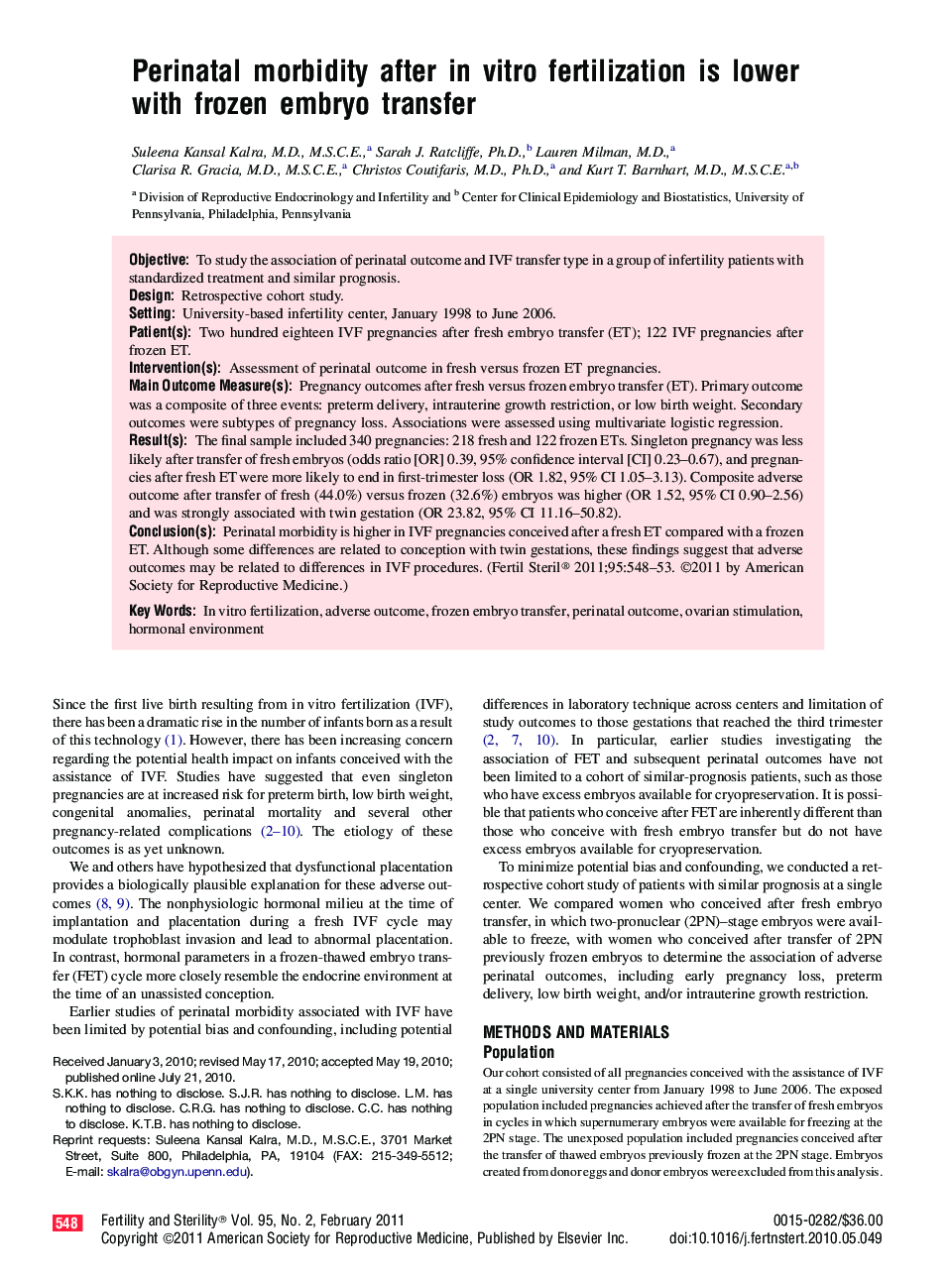| Article ID | Journal | Published Year | Pages | File Type |
|---|---|---|---|---|
| 3939539 | Fertility and Sterility | 2011 | 6 Pages |
ObjectiveTo study the association of perinatal outcome and IVF transfer type in a group of infertility patients with standardized treatment and similar prognosis.DesignRetrospective cohort study.SettingUniversity-based infertility center, January 1998 to June 2006.Patient(s)Two hundred eighteen IVF pregnancies after fresh embryo transfer (ET); 122 IVF pregnancies after frozen ET.Intervention(s)Assessment of perinatal outcome in fresh versus frozen ET pregnancies.Main Outcome Measure(s)Pregnancy outcomes after fresh versus frozen embryo transfer (ET). Primary outcome was a composite of three events: preterm delivery, intrauterine growth restriction, or low birth weight. Secondary outcomes were subtypes of pregnancy loss. Associations were assessed using multivariate logistic regression.Result(s)The final sample included 340 pregnancies: 218 fresh and 122 frozen ETs. Singleton pregnancy was less likely after transfer of fresh embryos (odds ratio [OR] 0.39, 95% confidence interval [CI] 0.23–0.67), and pregnancies after fresh ET were more likely to end in first-trimester loss (OR 1.82, 95% CI 1.05–3.13). Composite adverse outcome after transfer of fresh (44.0%) versus frozen (32.6%) embryos was higher (OR 1.52, 95% CI 0.90–2.56) and was strongly associated with twin gestation (OR 23.82, 95% CI 11.16–50.82).Conclusion(s)Perinatal morbidity is higher in IVF pregnancies conceived after a fresh ET compared with a frozen ET. Although some differences are related to conception with twin gestations, these findings suggest that adverse outcomes may be related to differences in IVF procedures.
